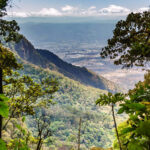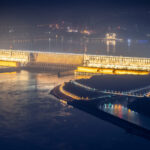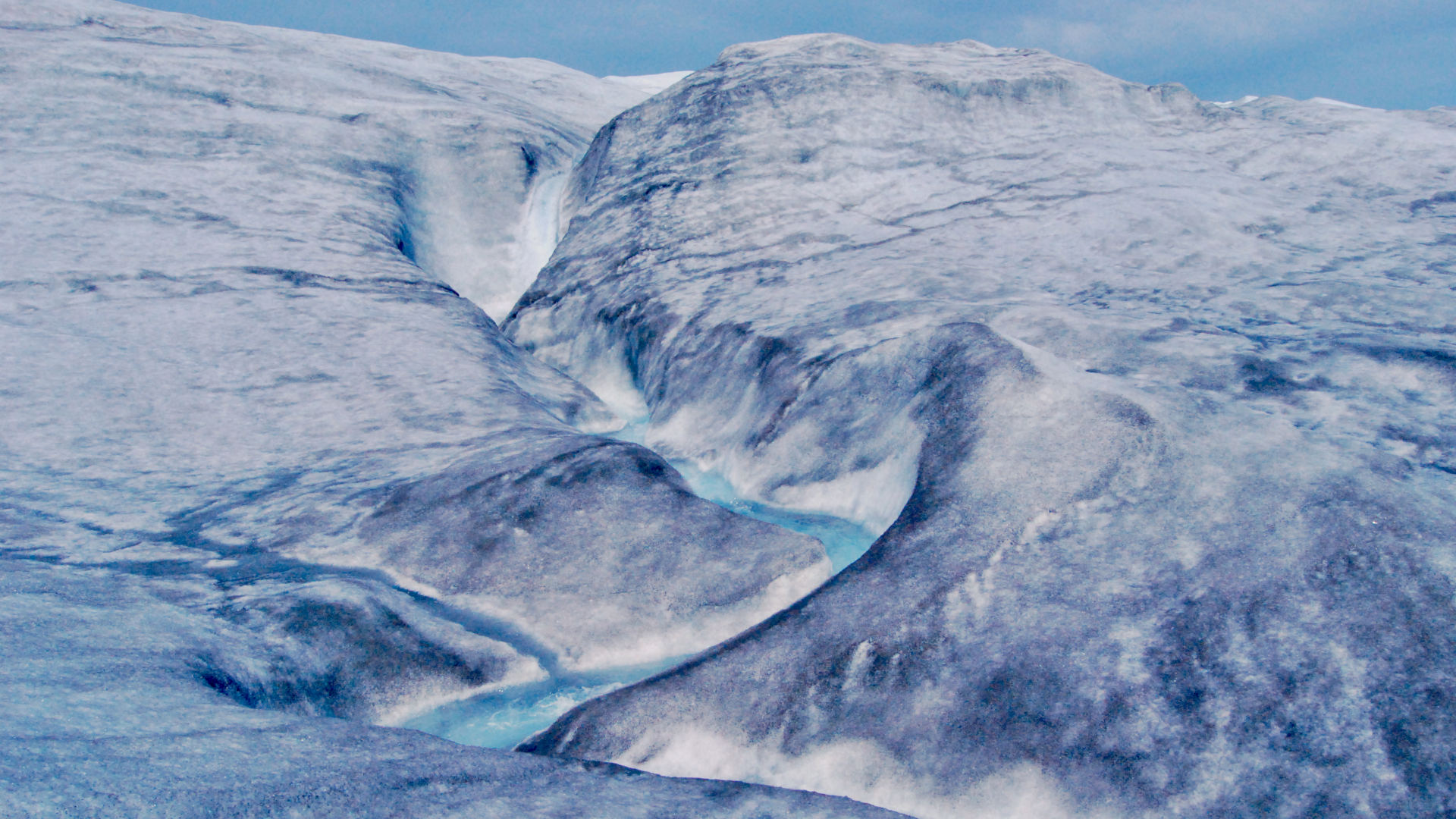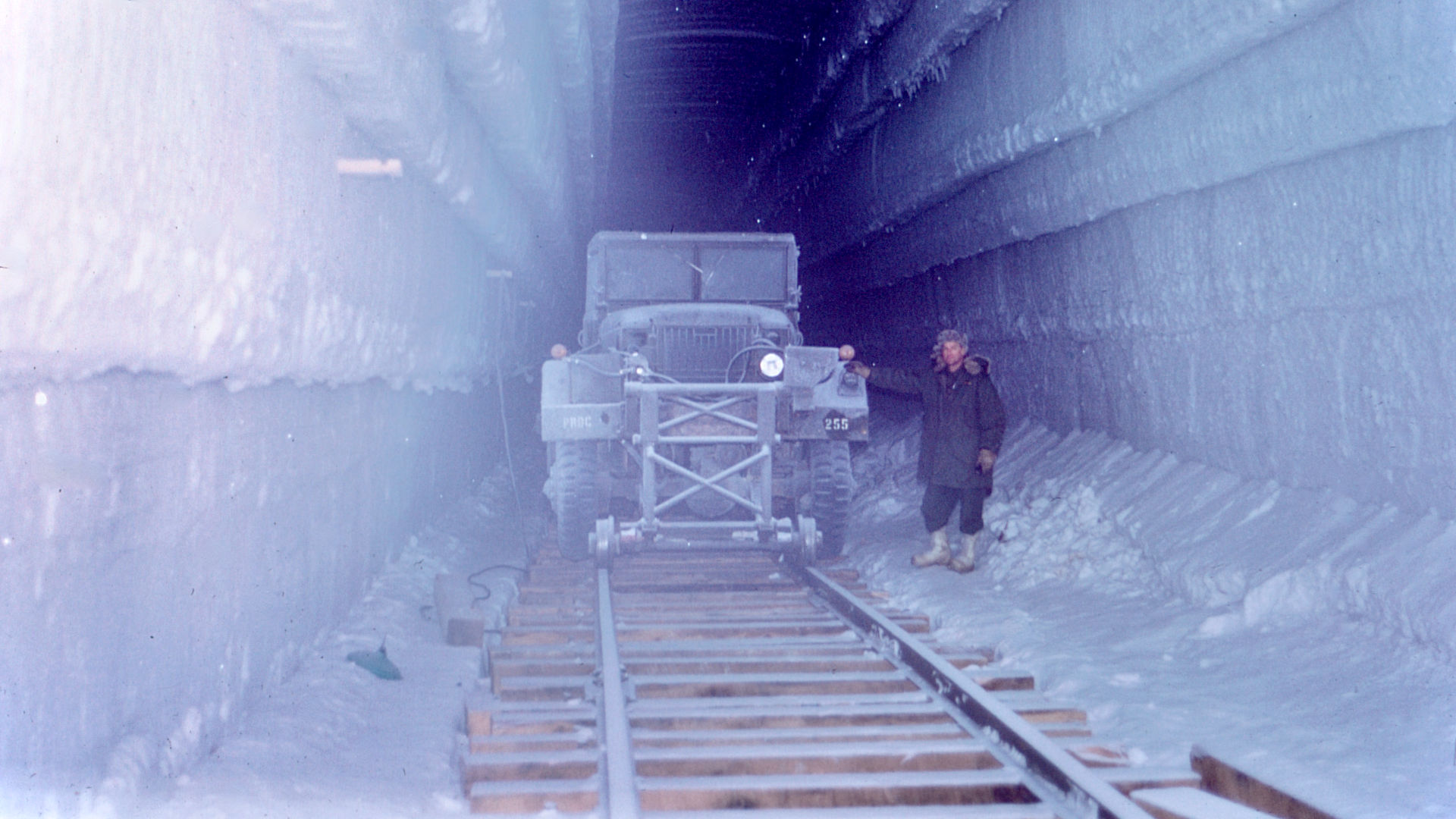Donald Trump has a thing for Greenland. First, he wanted to buy the Arctic island. Then, his son visited for a photo-op. Now, he refuses to rule out using the U.S. military to seize it.
Decades ago, the value of Greenland was indeed its strategic location between superpowers and its unique mineral resources. No longer. Today, Greenland’s value is the ice that covers 80 percent of the island. Keeping Greenland’s ice frozen preserves at least a trillion dollars of wealth generation, according to a 2020 study, and would help prevent trillions of dollars in estimated losses by 2100. If we let all that ice melt, global sea level will rise 24 feet higher than it is today. Low-lying farm fields, factories, homes, and large swaths of cities including New Orleans, Miami, Jakarta, and Mumbai will mostly vanish beneath the waves unless we spend even more building barricades to keep the ocean out.
What matters now is cooling Earth’s climate to preserve Greenland’s ice and with it, our collective coastal future. Yet, the president continues to view the island nation through an antiquated lens of power: possessing the land of others to generate wealth and to keep perceived enemies at bay.
Trump’s fascination with Greenland is not a new idea. For more than a thousand years, colonial aspirations have shaped the island’s history. The Norse, Danes, Nazis, and Americans came to Greenland chasing territory and natural resources, and for military domination of the Arctic.
Consider Erik the Red, who migrated from Norway as a child, and was later banished from his home in Iceland for murder. In 985 C.E., he sailed deep into a southern Greenland fjord. On a patch of flat coast, Erik established Brattahlíð, the first of what would become about 500 Norse farms on the island. Within a few hundred years, the Norse had vanished. We now know that climate change had pushed sea level almost 10 feet higher in southern Greenland, flooding their settlements and contributing to their demise.
Nearly a thousand years later and a 10-minute boat ride across the fjord from Brattahlíð, U.S. military bulldozers built a mile-long airstrip at the start of the Second World War. Stopping there to refuel on their one-way journey to the European theatre, U.S. bombers rumbled past the Norse ruins.
The president continues to view the island nation through an antiquated lens of power: possessing the land of others to generate wealth and to keep perceived enemies at bay.
The Americans were not alone. On the desolate East Greenland coast, Nazi meteorologists radioed coded weather reports to Germany, critical information for accurate battlefield forecasts because weather in Europe comes mostly from the west. This was the first hint that Greenland was strategically valuable both in war and as a piece of Earth’s climate system.
As the Cold War heated up, the American occupation of Greenland expanded. The sprawling U.S. airfield at Thule, only about 2,800 miles from Moscow, housed atomic weapons and 10,000 men. Camp Century, the Army’s nuclear-powered base, hummed inside the ice sheet. It was the start of a grand plan that would have intermediate range tactical nuclear missiles moving back and forth through ice sheet tunnels. This atomic shell game would cover an area about the size of the state of Alabama. But in just a few years, that fever dream faded as the snow tunnels collapsed and long-range ballistic missiles diminished Greenland’s deterrent value.
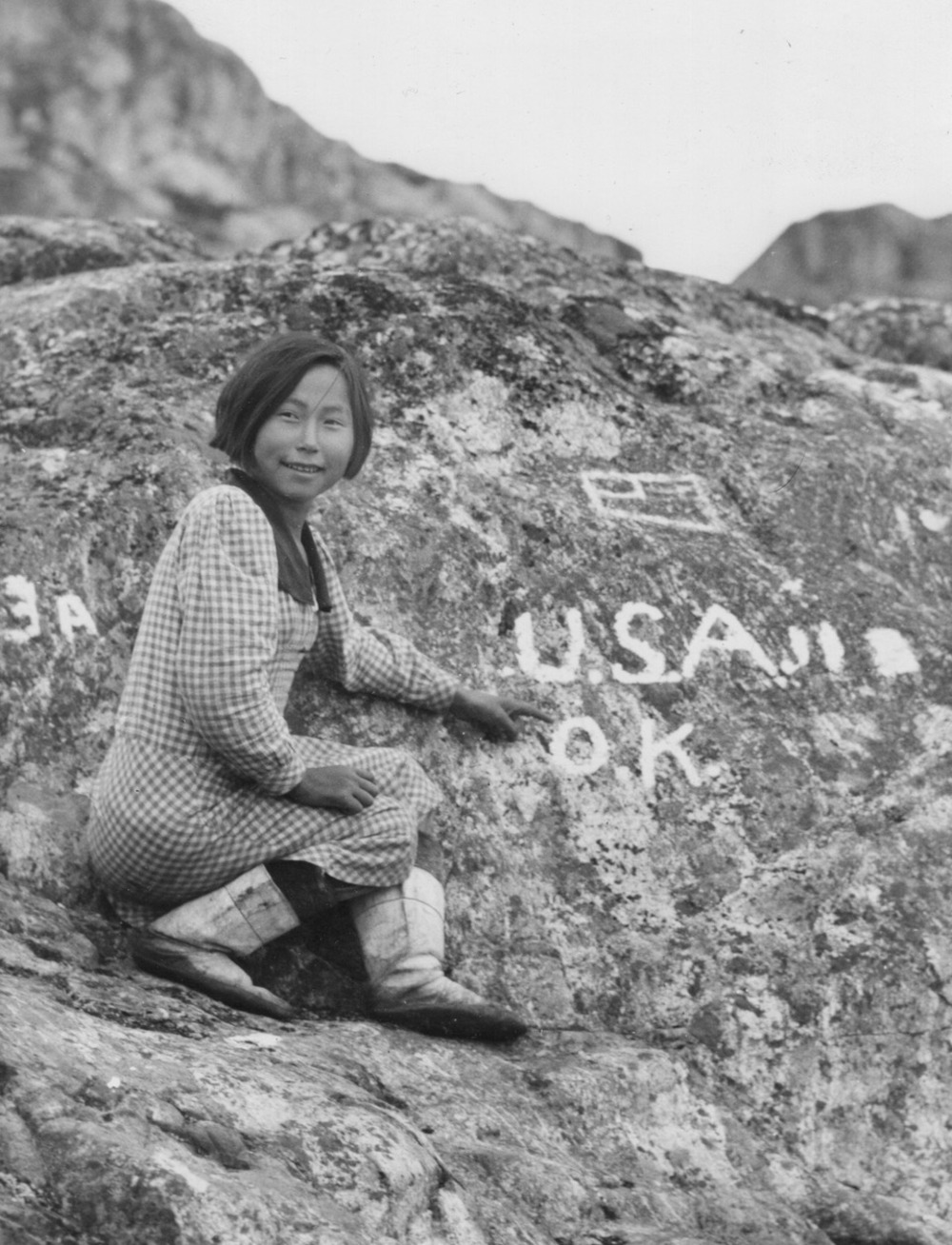
In 1945, a 14-year-old girl is pictured near her home in Skjoldungen, southeast Greenland. A U.S. Army sargeant describing the photo reported that she “uses the typical American expression ‘O.K’ which in any language means she likes it a lot.”
Visual: U. S. Army Signal Corps
By the late 1960s, American soldiers were going home because occupying the Arctic was no longer as strategically meaningful. Abandoning bases, the military left an assortment of hazardous materials in their wake: at Camp Century, 10,000 tons of waste including persistent and toxic organic chemicals like polychlorinated biphenyls, lead, asbestos, and millions of gallons of frozen sewage; and at Thule, a harbor contaminated with plutonium when a nuclear weapon, carried by a crashed B-52 bomber, disintegrated on impact.
In recent years, the Danes have been tidying up that mess, base by abandoned base. But no one has been meaningfully cleaning up the global atmosphere. Since the combustion of fossil fuels started in earnest about 1850, humans have added greenhouse gases sufficient to warm Earth by an average of more than 2 degrees Fahrenheit; the Arctic is warming several times faster.
Like an ice cube on a sultry summer day, Greenland’s ice sheet is melting, and that water, flowing into the ocean, is steadily raising sea level globally. The rising ocean is now endangering our national security.
Consider that Naval Station Norfolk, the largest military port in the world and home to five of 12 U.S. aircraft carriers, is now sinking beneath the waves. Worldwide, more than half a billion people live within 25 feet of sea level, according to a 2019 study. If Greenland’s ice continues to melt, rising seas will submerge their homes and farms, like those of the Norse. What follows will be the largest human migration in history.
Greenland’s ice wouldn’t be melting if several decades of moral appeals to address climate change had effectively engaged people and politicians. But those pleadings, often couched in apocalyptic tones, have fallen flat. We need a different approach.
I suggest that advocating for climate stability as a strategic and economic imperative — an idea that politicians across the ideological spectrum could support — is our best hope to keep Greenland’s ice frozen and thus the seas from rising further. The U.S. military, integral to the Cold War occupation of Greenland and respected by most Americans, provides an example of just such an approach.
Military and intelligence planners are acutely aware of the strategic threat that climate change presents globally as droughts, floods, and heatwaves destabilize food supplies and regimes. They know that climate change is a threat multiplier and catalyst for conflict. The increasing frequency of rare, extreme, and potentially destabilizing climate events now makes global geopolitics ever more uncertain.
The experience of the U.S. military shows that taking action to reduce climate impacts can be both an economic and strategic win. At bases around the world, engineers have expanded the use of renewable energy while building local microgrids with battery storage for reliable, 24/7 power. Stepping away from fossil fuels is already saving millions of taxpayer dollars in energy costs while reducing supply chain and operational vulnerability.
In a way, Donald Trump has it right. We need Greenland — not the land, but the ice. Keeping that ice frozen means cooling our rapidly warming world, specifically, the Arctic. Decarbonizing the global economy is a critical first step. Next, we need to develop and test technologies, both mechanical and natural, that remove carbon dioxide from the atmosphere. Only then will Earth cool sufficiently to keep Greenland’s ice on land and out of the ocean.
Our planet’s temperature, not politicians’ ambitions, will determine whether the ice remains on Greenland or melts and pours into the global ocean.
The last time Earth was as warm as it was in 2024 was likely more than 100,000 years ago — a time when sea level rose at least 20 feet, reshaping the world’s coastlines. Some of that water came from Greenland’s melted ice. Even greater melting and sea level rise happened 400,000 years ago. Our planet’s temperature, not politicians’ ambitions, will determine whether the ice remains on Greenland or melts and pours into the global ocean.
Remember Trump’s Florida estate, Mar-a-Lago. Four feet of sea-level rise floods the lower lawn. Six feet and the Atlantic Ocean may trickle into the lobby. Melt Greenland’s ice sheet and only Mar-a-Lago’s upper story and tower protrude above the waves. Our collective actions over the next decades will determine the future of Earth’s ice and thus, global sea level.
President Trump, the most strategic choice now is not buying or seizing Greenland but working globally to save its ice sheet, because what happens in Greenland has yet to stay in Greenland.
Paul Bierman is a geoscientist and professor of natural resources at the University of Vermont with 40 years of experience studying glaciers and ice sheets. His latest book, “When the Ice is Gone,” recounts the military, climate, and scientific history of Greenland.





